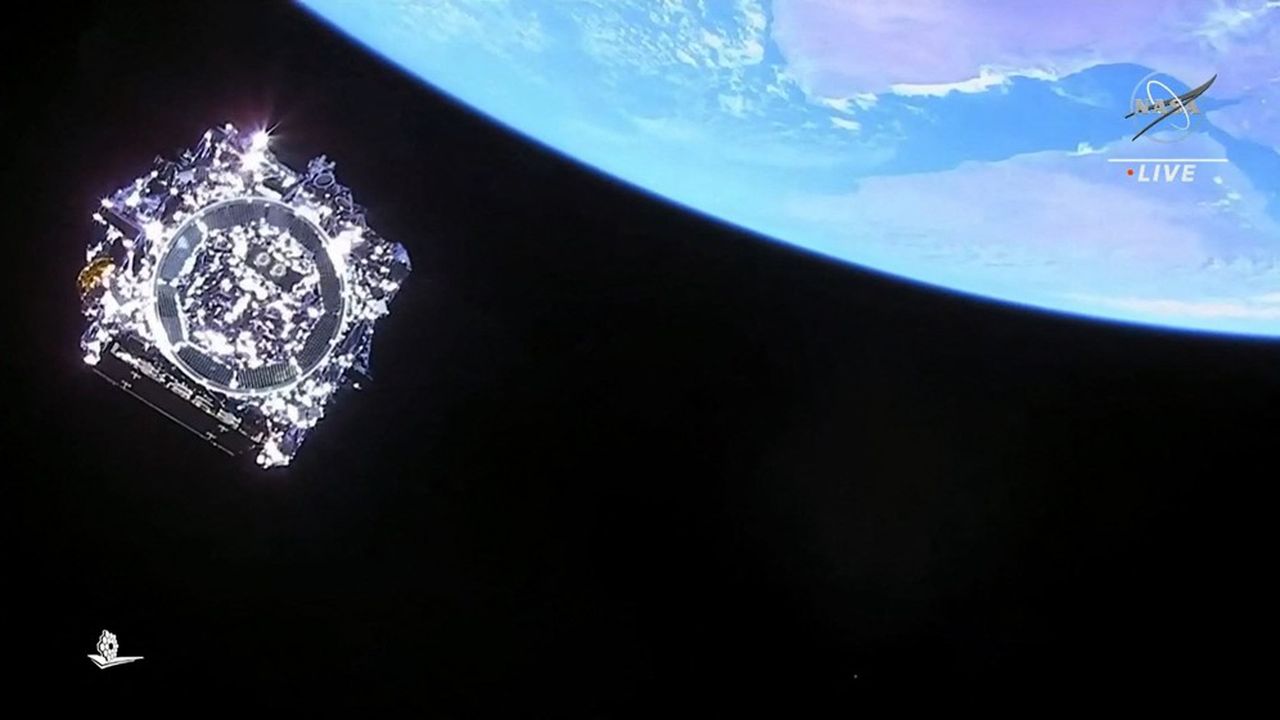James Webb reveals a new secret. The powerful space telescope, launched last December, has for the first time detected the presence of CO2 in the atmosphere of an exoplanet – a planet outside our solar system. A significant discovery that once again demonstrates the power of this telescope, which in July provided exceptional images of galaxies formed shortly after the Big Bang.
Located 700 light-years away, the observed planet, named “WASP-39 b,” was discovered in 2011. It has about a quarter the mass of Jupiter and is very close to its sun. WASP-39 b is happening very regularly (it orbits it in four days) and its atmosphere is expanding.
“A Special Moment”
James Webb used the transit method for his observations: as the planet passed its star, he recorded the resulting tiny variation in luminosity. He then analyzed the light “filtered” by the planet’s atmosphere. The different molecules present in the atmosphere leave specific signatures that allow their composition to be determined.
James Webb’s predecessors, the Hubble and Spitzer telescopes, had already detected water vapour, sodium and potassium in this planet’s atmosphere. But James Webb was able to go even further thanks to his exceptional sensitivity in the infrared.
If life as we know it is impossible on WASP-39b, this discovery supports the idea that such observations can also be made on rocky planets, with the ultimate goal of determining whether any of them offer favorable conditions for life. “This first result provides important information about the composition and formation of the planet and bodes well for the Webb telescope’s ability to detect and measure carbon dioxide in the thinner atmospheres of small rocky planets,” the CNRS said in a press release.
“My first reaction: Wow, we really have a chance to discover the atmosphere of Earth-sized planets,” gushed astrophysics professor Natalie Batalha of the University of California, Santa Cruz on Twitter. “It was a special moment, a milestone in exoplanet science,” added Johns Hopkins University’s Zafar Rustamkulov, who was quoted in a NASA statement.
Go back in time
The US space agency and its European and Canadian partners have high hopes for James Webb, a $10 billion engineering gem. One of its main tasks is the exploration of the first ages of the universe thanks to its ability to capture the light emitted by very distant sources. In astronomy, foresight is synonymous with traveling back in time, since the light observed traveled billions of years before it reached us.
The first image from this extremely powerful telescope, released by NASA on July 12, shows galaxies formed more than 13 billion years ago. A colorful and very detailed image that even impressed US President Joe Biden, who described the day as “historic”.
VIDEO. The James Webb Telescope shows impressive images of Jupiter
With AFP

Avid beer trailblazer. Friendly student. Tv geek. Coffee junkie. Total writer. Hipster-friendly internet practitioner. Pop culture fanatic.




;Composite=(type=URL,url=https://images.radio-canada.ca/v1/assets/elements/16x9/outdated-content-2021.png),gravity=SouthEast,placement=Over,location=(0,0),scale=1)


